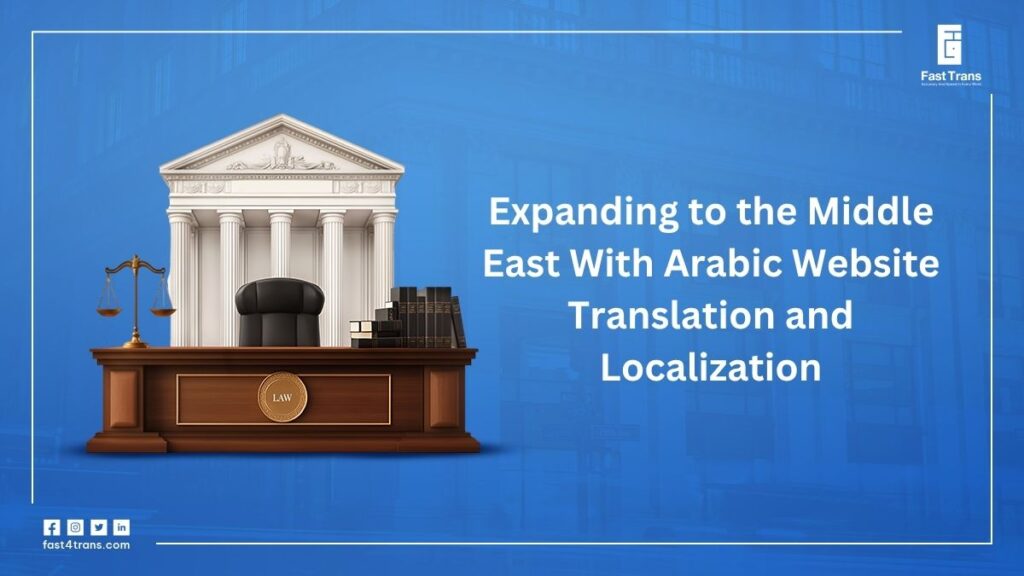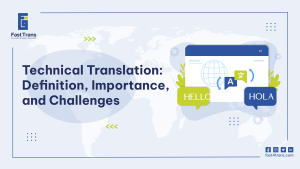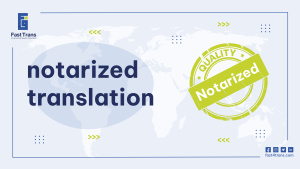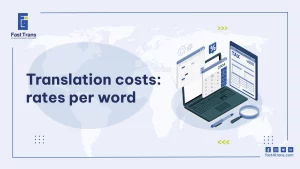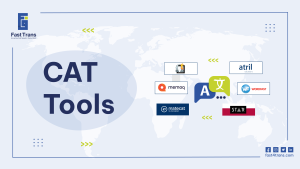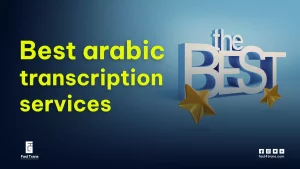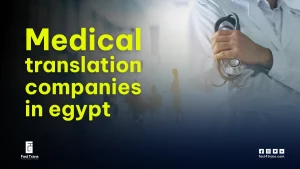The Middle East has rapidly become one of the world’s most dynamic and fast-growing markets, offering enormous opportunities for international businesses. With a young, tech-savvy population and a booming digital economy, the region is attracting global companies eager to expand their presence and tap into new customer bases.
At the heart of this expansion lies the Arabic language, spoken by more than 400 million people and ranked among the top five most spoken languages worldwide. Arabic is not just a means of communication; it’s deeply tied to culture, identity, and trust. For businesses aiming to succeed in this region, addressing customers in their native language is no longer optional; it’s essential.
However, reaching Arabic-speaking audiences goes beyond simple word-for-word translation. This is where the distinction between translation and localization becomes crucial. While translation focuses on converting text into another language, localization adapts the entire website, language, design, imagery, and user experience to align with cultural norms and consumer expectations.
Expanding To The Middle East:
The Middle East has emerged as one of the world’s most compelling business destinations, offering a unique combination of economic prosperity, technological advancement, and strategic positioning that makes it irresistible to global enterprises.
This dynamic region presents an extraordinary convergence of traditional wealth and modern innovation, creating unprecedented opportunities for businesses across all sectors.
1. Market Size and Economic Potential
The Middle East represents a substantial economic opportunity with a combined GDP exceeding $4 trillion across the region. The Gulf Cooperation Council (GCC) countries alone account for significant purchasing power, with high per-capita incomes in nations like the UAE, Saudi Arabia, and Qatar. The region’s strategic location at the crossroads of Europe, Asia, and Africa makes it a natural hub for international trade and commerce.
2. Digital Growth and E-commerce Expansion
The Middle East is experiencing unprecedented digital transformation, with e-commerce markets growing at double-digit rates annually. Countries like Saudi Arabia and the UAE are investing heavily in digital infrastructure as part of their national vision programs. The region’s young, tech-savvy population is driving demand for online services, digital payments, and mobile commerce solutions.
3. E-commerce Market Potential
Online retail is projected to reach over $50 billion by 2025 across the Middle East, with particularly strong growth in fashion, electronics, and lifestyle products. The COVID-19 pandemic accelerated digital adoption, creating lasting behavioral changes in consumer shopping patterns. Government initiatives promoting cashless economies and digital marketplaces are further fueling e-commerce growth.
4. High Internet Penetration Rates
Internet penetration across the Middle East averages over 70%, with some countries like the UAE and Bahrain reaching over 95%. This connectivity provides businesses with direct access to millions of potential customers online. The widespread availability of high-speed internet and 5G rollout in major cities creates opportunities for sophisticated digital services and applications.
The Difference Between Arabic Translation and Localization
When businesses expand into new markets, it’s important to understand the difference between translation and localization, as both play distinct roles in connecting with customers.
Translation is the process of converting text from one language to another. For example, turning English content into Arabic so that users can read and understand the information. While translation communicates the core message, it doesn’t always capture the cultural subtleties, tone, or context that shape how audiences perceive and respond to that message.
Localization, on the other hand, goes beyond language. It adapts the entire website, content, design, and functionality to align with the cultural, linguistic, and regional preferences of the target market. This includes using the correct currency and measurement units, adjusting the website’s layout for right-to-left (RTL) Arabic reading, choosing culturally appropriate visuals and colors, and reflecting local dialects, idioms, and communication styles.
Why Localization Creates a Better Customer Experience
Consumers are more likely to trust and engage with websites that feel “native” rather than simply translated. Localization ensures that a website is not only readable but also relatable and user-friendly. By removing cultural barriers and aligning with local preferences, businesses can deliver a seamless experience that builds credibility, strengthens brand reputation, and ultimately increases conversions.
Why Arabic Website Translation is Essential
Expanding into the Middle East requires more than just a global mindset; it demands speaking directly to customers in the language they know and trust. With over 400 million Arabic speakers worldwide, providing content in Arabic is not just a courtesy; it’s a business necessity. This makes Arabic website Translation essential for these reasons:
1. Arabic Speakers Prefer Browsing in Their Native Language
Studies consistently show that internet users are more likely to stay on and interact with websites available in their own language. With over 400 million Arabic speakers worldwide, businesses that offer Arabic content immediately become more accessible to a massive audience.
2. Builds Trust, Credibility, and Brand Loyalty
Language plays a central role in building trust. A website presented in clear, well-written Arabic signals respect for local culture and seriousness about the market. This not only boosts credibility but also helps brands establish stronger emotional connections with their customers, encouraging long-term loyalty.
3. Increases Accessibility and Engagement
Arabic translation doesn’t just make content understandable; it makes it relatable. Websites that cater to the language preferences of their audience often see higher engagement rates, longer browsing times, and improved conversion rates.
4. User Preference for Native Language Content
According to a CSA Research study, 65% of consumers prefer content in their native language, even if they have strong second-language skills. In the Middle East, this percentage is often higher, as Arabic is strongly tied to cultural identity and daily communication.
The Role of Arabic Localization in Business Success
For businesses entering the Middle East, localization is not just about language; it’s about creating a digital experience that feels authentic, respectful, and user-friendly for Arabic-speaking audiences.
1. Handling Cultural Sensitivities
Culture plays a central role in shaping consumer perception in the Middle East. Elements such as religion, imagery, colors, and tone carry significant meaning. For example, visuals or wording that may be acceptable in one market could be considered inappropriate in another.
2. Addressing Right-to-Left (RTL) Formatting and Web Design Challenges
Arabic is a right-to-left (RTL) language, which creates unique web design and layout requirements. A localized Arabic website must not only flip the text direction but also adjust menus, navigation bars, icons, and even the flow of visual elements. Businesses that overlook this often end up with websites that feel awkward or difficult to use.
3. Adapting SEO for Arabic Keywords and Search Engines
Localization extends beyond visible content; it also impacts how customers find a brand online. Arabic search behavior differs from English, with users often mixing dialects, transliterations, and Modern Standard Arabic in their queries.
4. Regional Variations: Modern Standard Arabic vs. Dialects
While Modern Standard Arabic (MSA) is widely understood across the Arab world, local dialects influence how people speak and search online. For instance, a phrase that works well in Egyptian Arabic may not resonate in Gulf Arabic.
Benefits of Professional Arabic Translation and Localization Services
Investing in professional Arabic translation and localization services delivers clear advantages for businesses aiming to expand into the Middle East. One of the most immediate benefits is the potential for higher conversions and greater customer satisfaction. When customers can easily navigate a website in their native language and feel that the content speaks directly to them, they are more likely to engage, trust the brand, and complete purchases.
Professional localization also strengthens a company’s brand image and increases its chances of a successful market entry. By presenting content that feels authentic and culturally relevant, businesses demonstrate commitment to their audience, which builds credibility and sets them apart from competitors who rely on generic or poorly translated content.
Another crucial advantage is ensuring compliance with regional norms and regulations. The Middle East has unique legal, cultural, and business frameworks that must be respected. Professional translators and localization experts are familiar with these requirements, helping companies avoid missteps that could harm their reputation or even block their market entry.
Read Also: Why and Who Needs Arabic Financial Translation Services?
How to Choose the Right Arabic Translation Partner
Selecting the right translation partner can make the difference between successful market entry and costly miscommunication. Businesses should carefully evaluate potential providers based on the following criteria:
1. Certified Translators or Agencies
Work only with translators or agencies who are certified and recognized by official bodies. This ensures that your translations will be accepted by government institutions, legal authorities, and international organizations.
2. Industry Experience
Each industry has its own terminology and standards. A translation partner with proven experience in your field, whether it’s legal, healthcare, finance, or technology, will provide accurate, specialized translations that meet industry requirements.
3. Range of Services: Standard and Certified Translations
Your business may need a mix of standard translations (for websites, marketing, and internal documents) and certified translations (for contracts, licenses, and legal papers). Choose a partner who offers both, so you can rely on one provider for all your needs.
4. Scalability and Timely Delivery
As your business grows, translation needs may expand across multiple markets and languages. Choose a partner who can scale with your business and deliver high-quality work within deadlines.
Read Also: Translating Documents for USCIS – A Step-by-Step Guide
Professional Arabic Translation & Localization Services by Fast Trans
At Fast Trans, we specialize in delivering high-quality Arabic translation and localization services that help businesses communicate effectively across the Middle East and North Africa. Our team of native Arabic linguists and subject-matter experts ensures that your content is not only accurately translated but also culturally adapted to resonate with your target audience.
We go beyond word-for-word translation; our services include website and app localization, RTL formatting, multilingual SEO, and content adaptation. Whether you need marketing materials, legal documents, technical manuals, or digital platforms localized, we guarantee precision, cultural sensitivity, and compliance with regional standards.
With Fast Trans, you gain more than a translation provider—you gain a partner dedicated to strengthening your brand presence, improving customer engagement, and driving business success in Arabic-speaking markets.
Contact us today via our official website
What Our Customers Say
Since the translation project is theirs, we encourage the clients to discuss every stage of the process.
You can check our clients’ comments for yourself at Google Reviews.
Conclusion
Expanding into the Middle East offers immense opportunities, but success requires more than just entering the market; it demands a genuine connection with Arabic-speaking audiences. Translation and localization are not optional extras; they are essential tools for building trust, enhancing user experience, and ensuring that your brand message resonates across cultural and linguistic boundaries. Businesses that invest in professional Arabic translation and localization gain a competitive edge, increase customer engagement, and establish a strong foundation for long-term growth.
By partnering with experts like Fast Trans, companies can confidently navigate the complexities of the Arabic language and culture while unlocking the full potential of this thriving region. Whether through website adaptation, SEO optimization, or certified document translation, the right approach ensures your brand feels native, authentic, and trustworthy. In a market as dynamic as the Middle East, effective localization is not just an advantage—it’s the key to sustainable success.

